Are you looking to replace or upgrade your Yamaha propeller? Our “Outboard Propellers – Engineered for Performance” article covered the basic engineering characteristics of a propeller. Even a casual reading will allow you to conclude that every inch and angle—even its material—makes a difference in the way your Yamaha propeller influences your boat’s performance.
Shop Featured Products
This article dives a bit deeper into the Yamaha propeller selection process, including taking a quick look at Yamaha propeller families and their typical applications. In addition to the information included in this article, the Yamaha Propeller Selector is an invaluable tool. PartsVu carries the full line of Yamaha propellers, so after inputting all of the needed information, you can simply head back to PartsVu.com and search for the recommended Yamaha propeller part number.
Yamaha Propeller Selection
As you begin your outboard propeller selection process, think about the type of boating you do, and the aspects of your boat's performance would you like to correct or improve?
Generally speaking, boaters are trying to improve one or a combination of the following factors:
- Over-revving at Wide-Open Throttle (WOT)
- Failure to reach optimum RPM at WOT
- Hole-shot and acceleration
- Inability to reach top speed
- Fuel economy
- Ventilating or cavitating
Maximizing Horsepower, Minimizing RPM

The right propeller for your boat and engine combination is based in part on the wide-open throttle (WOT) operating range for your specific engine. This information is an intersection of horsepower and RPM and can be found in your owner's manual.
An optimal outboard propeller will maximize your boat's performance while allowing your engine to operate in the recommended RPM range. The correct propeller will prevent the engine from over-revving and facilitate maximum horsepower with minimum RPM.
An outboard engine under load should reach the manufacturer’s recommended RPM at WOT, usually expressed as an RPM range. Your optimal propeller will deliver acceptable acceleration and top speed while still allowing your Yamaha outboard to reach its recommended revs at WOT.
If you get this relationship wrong, premature engine damage is too often the result.
Outboard Propeller Considerations
Your propeller decision-making process will include the following factors: pitch, diameter, aluminum or steel, blade number, rake, cupping, and rotation.
Propeller Pitch
Pitch is a critically important factor when selecting a new propeller. Pitch is the distance the prop would travel forward after one complete rotation, assuming no resistance or slip.
Lower-pitch propellers encounter less resistance facilitating faster rotation and enabling hole-shot and acceleration. However, because each propeller revolution generates less forward travel, the ultimate top speed will be lower at WOT.
Hole-shot and acceleration will be reduced with higher pitch props because the outboard propeller encounters more resistance. This said, additional resistance reduces the motor's RPMs and top speed at WOT.
Generally speaking, increasing prop pitch lowers RPM, while decreasing prop pitch raises RPM.
If you need more speed, a higher pitch is generally the way to go. However, If you use a propeller with a too high pitch, the motor won't have enough horsepower to turn it adequately, so the revolutions per minute will drop. Referred to as over-propping, it overloads the engine and causes excessive wear. Under-propping—fitting a propeller with too low a diameter or pitch—can damage your engine through over-revving. Under-propping will also adversely affect fuel consumption.
Prop Diameter
Each outboard propeller has two numbers stamped on them – diameter and pitch. For example, a 14 x 19 propeller has a diameter of 14 inches and a pitch of 19 inches. The greater the diameter, the more resistance it will experience in the water.
A larger diameter propeller reduces the RPM and top-end speed. On the other hand, smaller diameter propellers increase RPM and top-end speed. However, smaller diameter props slip more frequently and are not good choices if hole-shot or acceleration improvement is your goal.
Aluminum or Steel
Aluminum propellers are the most common and the least expensive. Stainless steel propellers are more durable and generally perform better due to both thinner and stiffer blades.
Number of Blades

Most commonly, propellers have either three or four blades. Three-blade propellers are most common on general use recreational boats. With only three blades in the water, they encounter less resistance increasing fuel efficiency, and they generally have minimal impact on your outboard engine's RPM.
Four-blade propellers improve hole-shot acceleration; therefore, commonly used on ski boats. These props improve handling and are generally better in rough water.
Propeller Rake
Propeller rake is the angle that the blades slant backward. The higher the rake angle, the more the boat's bow lifts out of the water. A high rake angle reduces time to plane and increases top-end speed. However, if a rake is too high, the outboard motor will operate under strain and experience premature wear.
Cupping
A cupped propeller includes a curved lip to the trailing edge of propeller blades. It will get better traction in the water, reducing prop slip and ventilation, and improves hole-shot and acceleration. Cupped props allow the engine to be trimmed so the propeller is closer to the water's surface and can dramatically reduce RPM.
Propeller Rotation
Rotation is not an issue for most boaters as most outboards rotate the propeller shaft and propeller clockwise. However, a few run counter-clockwise, especially in dual outboard setups in which one motor runs clockwise, and the other runs counter-clockwise for better balance. Make sure your selected prop is designed for the correct rotation.
Yamaha Propeller Families
With a discussion of many outboard propeller characteristics covered, let’s look at Yamaha's propeller lineup by application and general boat classification.
Small & Medium Boats
Reliance
Created specifically for high-horsepower, in-line four-cylinder outboards (F150, F175, and F200). It’s faster at all RPM ranges than Yamaha’s painted stainless-steel propellers and resists ventilation. It features a new SDS design that needs no special hardware to function.
Talon SS
Smooth, quiet shifting, and trolling for F70 – F115 and T50/T60 outboards on pontoon, walleye, fiberglass, and deep-V boats. They feature an updated SDS design that requires no special hardware to function.
Aluminum
Low-cost and lightweight, it provides good overall performance for outboards 2 HP to 225 HP, and a wide variety of applications.

Family & Watersport Boats
Reliance
The Reliance family of outboard props is also great for many family boats pulling towables and boaters who participate in watersports.
Talon Pontoon
Excellent low-speed operation, providing higher thrust and control than conventional propellers on pontoons (even heavily loaded) using T50-F115 outboards. Features an SDS design that requires no special hardware to function.
Dual Thrust
Harnesses the power of Yamaha’s high-thrust outboards for pushing heavy loads such as sailboats and pontoons, and provides outstanding reverse thrust. Standard on T9.9 and T25, optional on T50 and T60.
Bass, Bay & Flat Boats
V MAX SHO
An ultra-high-performance ventless design and single-inch pitches allow you to fine-tune the performance of Yamaha’s four-stroke V MAX SHO.
Pro Series
This stainless-steel series provides high performance for single-outboard boats requiring bow lift.
Talon SS4
Stronger hole-shot than comparable 3-blade propellers. Excellent on mid-range powered flats boats or for applications requiring high engine mounting heights. Fits F70 to VF115, T50/T60 K series (4.25") gearcases. Standard Shift Dampener System (SDS).
Large Boats
Saltwater Series II
Designed for larger offshore boats, it provides more extended cruising range, superior midrange fuel efficiency, and better handling in rough seas. Features a new SDS design that requires no special hardware to function.
Saltwater Series XL
Designed for the V8 F350 four-stroke outboard, these propellers provide plenty of power-to-plane, acceleration, and top-end. The updated hub system accommodates older Yamaha F350s.
XTO OS Propellers
With diameters from 16 to 17 1/8 inches and increased blade surface, XTO OS propellers are engineered to complement the torque potential of V8 XTO Offshore outboards on 50-foot and larger boats. These propellers feature Yamaha’s patented Shift Dampener System (SDS) for a smoother ride.
If you are considering replacing or upgrading your Yamaha propeller, we hope this information helps. As mentioned at the beginning of this article, the Yamaha Propeller Selector is a valuable tool that is extremely helpful.


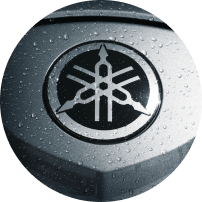
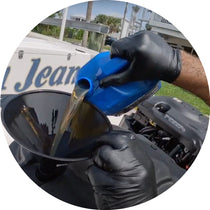
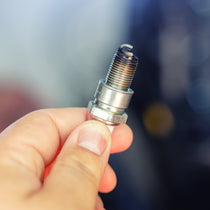
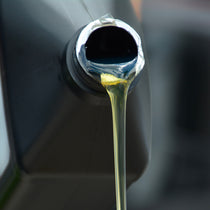
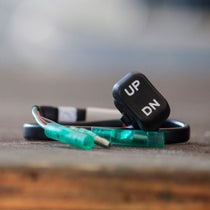
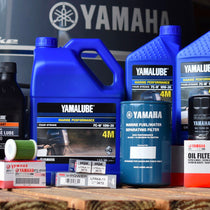
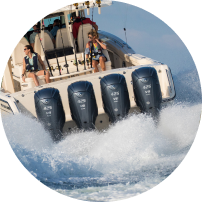

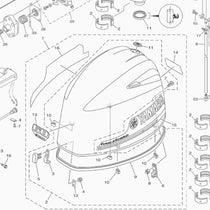











47 comments
Hi, I have an Grady White 180 Sportsman CC with a Yamaha 115 hp 4 stroke engine. What size/Pitch prop would work the best for this boat? Presently is has a 13-1/2” X17 SS prop. I feel as though the engine is laboring excessively to achieve plane.
———
PartsVu replied:
Hello,
Thank you for reading! Have you checked out Yamaha’s prop selector tool? This tool allows you to enter the information of your boat, engine, and performance in order to get you the part number that best matches your needs. Check out the link below.
https://www.yamahapropselector.com/propSelector/web/
Happy boating!
Jessica Zapatero PartsVu Customer service Manager 888-625-5460 PartsVu.com Monday – Friday 8:00 am to 5:00 pm
[cid:image001.png@01DAD7AB.8BC58C90]
Hello Jake,
Please email partsvu@partsvu.com with all your information. If possible include your serial number, and the part number for the previous propeller and we would be happy to help you as best we can!
Best,
Mario
Hey Jake,
Please email us at partsvu@partsvu.com with your engine serial number. We will also need a little bit more information so we can ensure we are finding the performance you want. We look forward to hearing from you!
Best,
Mario
Recommendations? F150 XA engine.
I have a 2015 20 foot starweld v-hull bowrider with a Yamaha 150, original engine. I just found a large rock in a small reservoir in Idaho and did quite a bit of damage to the prop, bent the skag too. Starweld says the boat is 1200 pounds without engine, with the 150 and a 9.9 Yamaha trolling motor I’m sure it’s 2000 pounds. What prop do you recommend? As a retired service man, it will be aluminum due to cost. High speed is not the goal, but I want to get on a plane fairly quickly for grandkids, tubes, skis, etc. It is primarily a fishing boat.